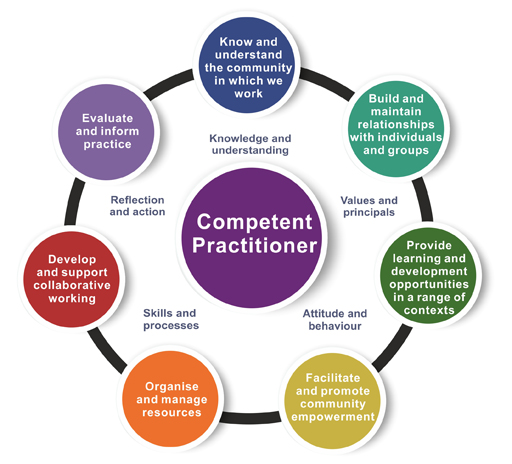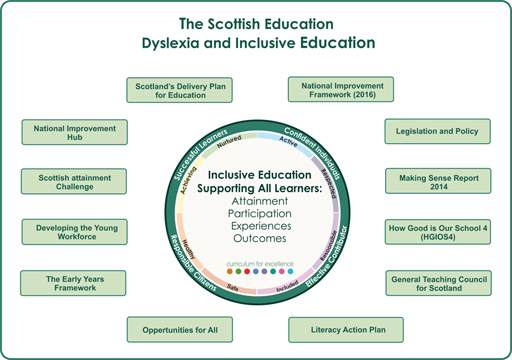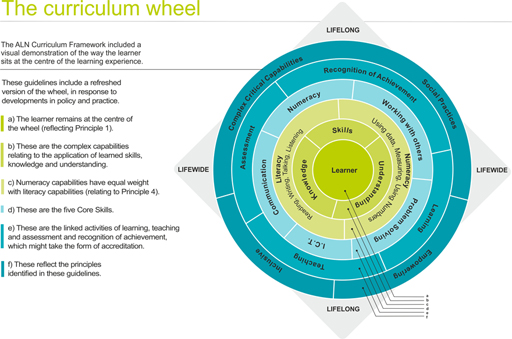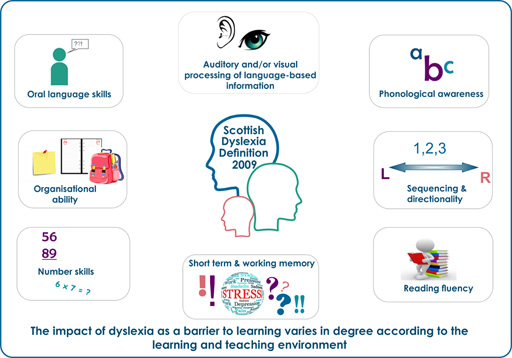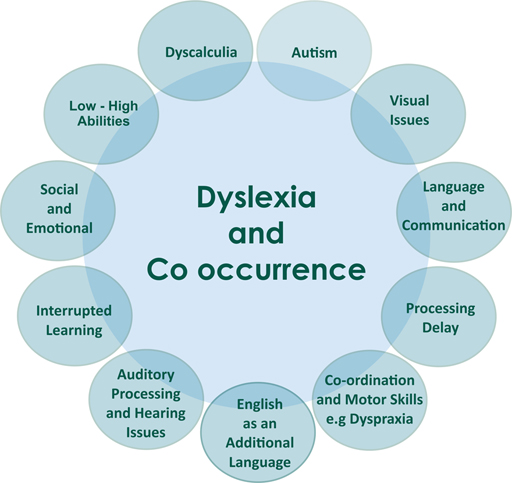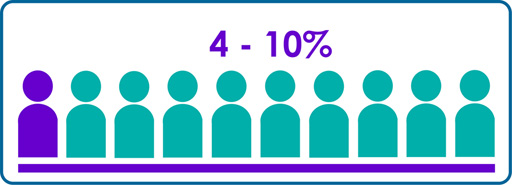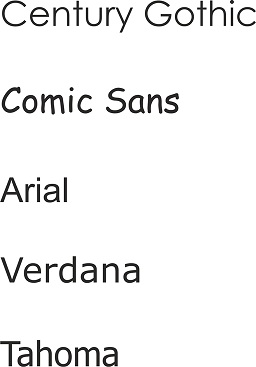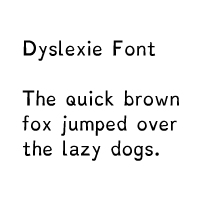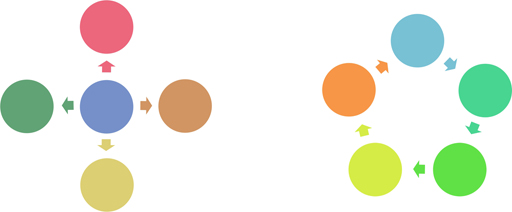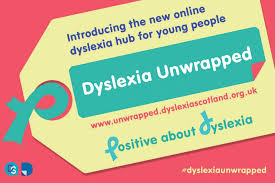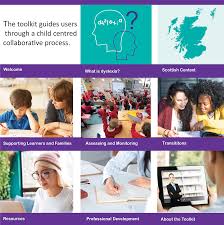Use 'Print preview' to check the number of pages and printer settings.
Print functionality varies between browsers.
Printable page generated Tuesday, 23 April 2024, 4:16 PM
An Introduction to Dyslexia and Inclusive Practice for Community Learning and Development (CLD)
Module overview
Welcome to this free module, ‘An introduction to dyslexia and inclusive practice for Community Learning and Development (CLD)’. It is designed to provide an introduction for community educators and anyone within a CLD setting to raise awareness of dyslexia and improve their inclusive practice.
During the module, you can test your knowledge by undertaking some different activities. At the end of the module, you will be asked to complete an assessed quiz. If you gain a score of at least 60% in the assessed quiz, have attempted all of the activities and have clicked through all the pages of the module you will earn a digital badge.
The module includes a reflective log. The activities in the module can be completed on your own but you can also use them to support group work with colleagues.
It is anticipated that this module will take between 2 and 3 hours to complete. However the length of time will be determined by a range of factors such as prior knowledge and the depth of learning undertaken.
Introduction
This introductory module aims to provide practitioners with improved awareness of what dyslexia is, its impact, how it is assessed in different contexts and how it can be supported within an inclusive learning environment.
This introductory module does not provide information on everything you may wish to know about dyslexia; however it will signpost you to where you can access further information, guidance and support.
Each section of the module provides opportunities to reflect on your own practice.
Learning outcomes
After studying this introductory module and participating in the tasks you will have an awareness of:
- The education context for dyslexia in Scotland
- What dyslexia is and its impact
- How dyslexia is identified and assessed
- Information and practical support strategies when working in the CLD sector.
- The synergy between CLD inclusive practice and dyslexia support.
Before you start you should download your reflective log. How you use the log is up to you. You can save it and work with it online or print it off and keep it up to date in hard copy.
Throughout the module you will be prompted to record your responses to activities and your reflection.
How you can study this module
To gain your digital badge you must complete the module online. A bar on each web page highlights your progression through the module. Please be aware that offline completion of this module using the downloadable version of the module will not activate the necessary requirements to gain the digital badge.
Ensure you have saved the module landing page to your device for easy access and also to avoid confusion with another Open University site which has a similar name, Open Learn (below in grey). You might also be interested in resources from Education Scotland available through the Dyslexia Overview page on the National Improvement Hub and share the link with colleagues.
Badge information
What is a badged course?
Badges are a means of digitally recognising certain skills and achievements acquired through informal study and are entirely optional. They do not carry any formal credit as they are not subject to the same rigour as formal assessment; nor are they proof that you have studied the full unit or course. They are a useful means of demonstrating participation and recognising informal learning.
If you'd like to learn more about badges, you will find more information on the following websites:
- Open Badges)] – this information is provided by Mozilla, a leading provider of the open badges system.
- Digital Badges – this information is provided by HASTAC (Humanities, Arts, Science and Technology Alliance and Collaboratory), a global community working to transform how we learn, and particularly making use of technology.
Gaining your badge
To gain the digital badge for 'An introduction to Dyslexia and Inclusive Practice for Community Learning and Development (CLD)', you will need to:
- Complete the short activities included in each section. They are really helpful in consolidating your learning but there is no pass mark.
- Complete the end-of-module quiz that you’ll find at the end of the last section of the module and achieve at least 60%.
When you have successfully achieved the completion criteria you will receive your badge for ‘An introduction to Dyslexia and Inclusive Practice for Community Learning and Development (CLD)’. You will receive an email notification that your badge has been awarded and it will appear in the My Badges area in your profile. Please note it can take up to 24 hours for a badge to be issued.
Your badge demonstrates that you have achieved the learning outcomes for the module. These outcomes are listed at the start of each section.
The digital badge does not represent formal credit or award, but rather it demonstrates successful participation in informal learning activity and your commitment to professional learning.
Accessing your badge
From within ‘An introduction to Dyslexia and Inclusive Practice for Community Learning & Development (CLD)' module:
- Go to my profile and click on achievements. You will see the badge alongside the course title.
- To view the details of the badge or to download it click on the badge and you will be taken to the Badge Information page.
- You can download this page to your computer.
Acknowledgements
This module was informed and written by:
· Dyslexia Scotland and the CLD Standards Council Scotland
· with support from the Specific Learning Difficulties Forum which is co-hosted by Education Scotland and Dyslexia Scotland. Membership comprises practitioners who work within the Community Learning & Development sector in Scotland.
Except for third party materials and otherwise stated in the acknowledgements section, this content is made available under a Creative Commons Attribution-NonCommercial-ShareAlike 4.0 Licence.
Professional Learning in CLD
The CLD Standards Council believes that practitioners should continue their professional development throughout their involvement in CLD, with professional learning as an integral part of their practice.
To support practitioners, the CLD Standards Council will nurture a culture of learning in our sector in order that individual engagement will contribute to the development of the whole profession; we will celebrate learning, relish challenge and reflect critically on our practice.
This culture is underpinned by the values and competences of CLD and commitment to our Code of Ethics.
The Competent Practitioner Framework brings together the knowledge, skills and personal characteristics that make up competence in CLD practice.
The Competent Practitioner Framework comprises:
7 competences, 5 key attributes and the definition of a competent practitioner.
Each competence has a Purpose, Context and Indicators which sit underneath the Competence heading; these are described in the Competent Practitioner Framework.
Download your Reflective Log. You can complete the activities within the log using an IT devise or choose to print it off.
Activity 1 – Reflective Log Activity
In your Reflective Log consider what you hope to achieve in studying this course.
1 Understanding Dyslexia in Scotland
In this section we look at:
1.1 The Scottish Context
1.2 What is Dyslexia?
1.3 Background to Dyslexia
1.4 The Impact of Dyslexia
Activity 2 - Reflective Log
Before you begin this module it will be helpful to note down your current knowledge and understanding of dyslexia, at the end of this module you will have an opportunity to reflect on your learning and revisit this activity. Your reflections can be used as evidence to support your professional learning and development.
In your Reflective Log consider what dyslexia means to you. This could include the following:
- What is your understanding of dyslexia?
- Have you experienced supporting individuals who may be or know they are dyslexic? If so, has there been an impact on individuals/ learners you have or are working with?
- Is this an area in which you feel a comfortable level of knowledge and understanding?
1.1 The Scottish Context
Whilst dyslexia affects on average 1 in 10 of the general population, this proportion tends to be much higher in prison, unemployed and homeless populations. CLD services often engage with disadvantaged groups such as these.
Dyslexia is hereditary and therefore many dyslexic adults accessing CLD support may also have children with dyslexia. Historically, identification and support of dyslexia was very different to contemporary education settings. Adults accessing CLD or taking part in informal community development activities may have had a negative experience of education in the past, so might lack confidence in participating in learning. Dyslexic learners can thrive in an inclusive learning environment. CLD practitioners are well placed to engage and inspire in informal learning contexts, providing appropriate support is given. It may be useful for practitioners to understand the current context for how dyslexia is identified and supported in schools.
Dyslexia Context at School
For school aged children and young people, Scotland’s education system is an inclusive one which is ‘needs led’. This means that the provision of support does not require a formally identified label, for example dyslexia. In Scotland ‘Additional Support Needs’ is the standard terminology used when children and young people need more - or different - support to what is normally provided in schools or pre-schools to children of the same age. Our education system is designed to make sure that every child and young person is entitled to support to enable them to gain as much as possible from the opportunities which Curriculum for Excellence can provide.
Download a summary overview of Curriculum for Excellence
As we consider the educational provision for learners with dyslexia in Scotland, it is important to acknowledge and consider the national agenda, legislative and guidance context within which local authorities, teachers and other educators work. Figure 2 provides you with an overview of Scottish education and the equality and inclusion context for schools and local authorities.
Dyslexia context post-school
Many of the adults you may work with within a CLD context may not have had a formal identification or assessment of dyslexia. They may not be aware that they are dyslexic. If they have had a formal assessment, it is more likely to have been carried out independently.
Many adults with literacy difficulties may believe they have dyslexia. However it is important to consider other factors.
Regardless of whether an assessment has taken place, the CLD approach to working with individuals who may encounter issues with dyslexia should follow a needs led model and be in line with current CLD related policy perspectives such as ‘Adult Literacies in Scotland 2020: Strategic Guidance’, ‘Adult Learning in Scotland: Statement of Ambition’ and the ‘National Youth Work Strategy’.
Download: Adult Literacies in Scotland 2020: Strategic Guidance
Download: Adult Learning in Scotland: Statement of Ambition
Download: The National Youth Work Strategy.
These policies endorse a social practice approach which means starting where the learner is and focussing on developing the skills, knowledge and capabilities that will impact on their life in whichever way they identify. Relevant social practices will differ between individuals: for one learner this might involve reading labels, estimating prices in their head and checking change; for another it might involve helping their children with homework, or passing an entrance exam to get onto a college course or to gain employment; another learner may need help with the theory test for a driving licence. The social practice approach is well embedded in adult literacies practice. The Figure 3 shows how the learner is placed at the centre and how their development is not planned around a set curriculum but instead focuses on what they identify they most need.
1.2 What is dyslexia?
A range of different dyslexia definitions and approaches to identifying dyslexia are used across the world. The variations can be due to the range of different policies from education departments and national approaches as a result of inputs from various stakeholders.
Scottish Government Definition of Dyslexia, 2009
In Scotland we have a working definition of dyslexia which was published in 2009 and has been developed and agreed by the Scottish Government, Dyslexia Scotland and the Cross-Party Group on Dyslexia in the Scottish Parliament. The aim of this particular definition is to provide a description of the range of indicators and characteristics of dyslexia as helpful guidance for educational practitioners, learners, parents/carers and others.
Scottish Working Definition,2009
Dyslexia can be described as a continuum of difficulties in learning to read, write and/or spell, which persist despite the provision of appropriate learning opportunities. These difficulties often do not reflect an individual's cognitive abilities and may not be typical of performance in other areas.
The impact of dyslexia as a barrier to learning varies in degree according to the learning and teaching environment, as there are often associated difficulties such as:
- auditory and/or visual processing of language-based information
- phonological awareness
- oral language skills and reading fluency
- short-term and working memory
- sequencing and directionality
- number skills
- organisational ability
Motor skills and co-ordination may also be affected.
Dyslexia exists in all cultures and across the range of abilities and socio-economic backgrounds. It is a hereditary, life-long, neurodevelopmental condition. Unidentified, dyslexia is likely to result in low self-esteem, high stress, atypical behaviour, and low achievement.
Learners with dyslexia will benefit from early identification, appropriate intervention and targeted effective teaching, enabling them to become successful learners, confident individuals, effective contributors and responsible citizens.
1.3 Background to Dyslexia
How do we know dyslexia exists?
Over the past 100 years there has been a great deal of debate regarding dyslexia and questions have been raised querying whether it is ‘real’ and whether it can be scientifically proven to exist.
Scientific advances such as the development of specialised scanning equipment, including Magnetic Resonance Imaging, (MRI) which can produce detailed images of the inside of the brain, have helped confirm that dyslexia does indeed exist.
This specialised scanning has enabled researchers to study dyslexic children and adults undertaking tasks such as reading and compare them with individuals who are not dyslexic. The results clearly show differences between how the brains process information. As highlighted earlier, dyslexia is not linked to cognitive ability and we need to ensure that learners with dyslexia and other additional support needs have equitable opportunities to demonstrate their knowledge and ability. Adjustments such as extra time, digital exams /course work and use of text recognition software may be required to provide a level playing field.
The co-occurrence of dyslexia with other areas of additional support
The Scottish working definition of dyslexia is broad. As highlighted in section 1.2 of this module, dyslexia does not only impact on the acquisition of literacy skills. The different characteristics involved with dyslexia are also found in a wide range of learner profiles and areas of additional support as highlighted in figure 5.
Ensuring that learning is accessible and inclusive will support more learners than just those who are dyslexic.
All children, young people and adults alike − with and without Additional Support Needs (ASN) − are effectively and successfully supported using learning and teaching strategies which focus on inclusive dyslexia-friendly approaches embedded within good practice.
‘Additional Support Needs’ is the standard terminology used in Scotland when children and young people need more – or different - support to what is normally provided in schools or pre-schools to children of the same age. Additional support is a broad and inclusive term which applies to children or young people who, for whatever reason, require additional support, long or short term, in order to help them make the most of their school education and to be included fully in their learning.
Download Summary Information of Additional Support Needs (ASN)
1.4 The Impact of Dyslexia
Dyslexia can have positive and negative impacts on children, young people, adults, parents/carers and educational professionals.
In children, young people and adults, when dyslexia is unidentified or unsupported the negative impact can be high.
Many adults participating in CLD activities will never have had a formal assessment for dyslexia. Their dyslexia may not have been picked up in school and their school experience is likely to have been poor because of this. They may have been labelled (or self labelled) as ‘stupid’ ‘slow’ or ‘lazy’ Others may have been identified but carry with the dyslexia label a stigma of poor literacy skills with low achievement expectations and poor self-confidence.
Conversely, there will be many adults who say their poor literacy skills are due to dyslexia as it may be easier to say they are dyslexic than to say they cannot spell or read very well. Often they will say that a teacher or other adult told them they were dyslexic but were never actually assessed and may not be dyslexic at all. Or they may have labelled themselves dyslexic, feeling that this is more acceptable than the alternative labels people might give them.
Activity 3
Think about your own experience of working with learners with dyslexia.
This is the list of factors associated with dyslexia that we identified as having an impact on individuals.
| Creativity | Spatial awareness | Frustration |
| De-motivation | Social skills | Resilience |
| Relationship difficulties | Lower achievement and attainment | Isolation |
| Low self-esteem | Ridicule | Mental health |
| Attention to detail | Problem solving | Depression |
| Fewer qualifications | Determination | Stress |
| Anger | Feeling different |
In your reflective log note down some of the factors that have a positive impact and some which are negative.
Click 'Discussion' to see what we thought.
Discussion
Do note that these factors are contextual and there is no right or wrong answer.
| Positive impact | Negative impact | Positive and negative impact |
|---|---|---|
| Creativity | Frustration | Social skills |
| Spatial awareness | Anger | Feeling different |
| Verbal skills | Isolation | Perfectionism |
| Holistic thinking | Low self-esteem | |
| Attention to detail | Ridiculed | |
| Problem solving | Mental health issues | |
| Practical tasks | Depression | |
| Determination | Fewer qualifications | |
| Resilience | Stress | |
| Feeling different | ||
| De-motivation | ||
| Relationship difficulties | ||
| Anxiety | ||
| Perfectionist | ||
| Lower achievement and attainment outcomes |
Dyslexia is often misunderstood and over the years a number of misconceptions have circulated.
Activity 4
a.
Dyslexia is all about reading and spelling difficulties
b.
The incidence of dyslexia is higher amongst males
c.
Not many people are dyslexic
d.
Only ‘clever’ people have dyslexia
e.
Dyslexia is a sign of low intelligence
f.
Dyslexia cannot be a disability
g.
In Scotland specialist staff are required to provide appropriate support, planning and monitoring of dyslexic children, young people and adults
No correct answers.
Discussion
1.Myth - Dyslexia is all about reading and spelling difficulties
Fact
Dyslexia does not only impact on literacy – reading, writing and spelling.
The working definition highlights the other characteristics shown below which can also impact on:
- auditory processing of language-based information
- oral language skills
- short-term and working memory
- sequencing and directionality
- number skills
- organisational ability
2. Myth - The incidence of dyslexia is higher amongst males?
Fact
Previously this was a widely-held belief that dyslexia affects males more than females. This is most likely due to the differences in coping strategies employed by each gender. Current consensus supports the belief that males and females are equally affected; although this remains an area of debate.
3. Myth –Not many people are dyslexic
Fact
There is consensus that between 4 – 10% of the population are dyslexic - although not all will have a formal identification of dyslexia and this remains an area of debate. It is estimated that one person in ten is dyslexic in Scotland (approx. 550,000), with 1 in 4 of those 10 (2.5%) classed as severely dyslexic.
4.Myth - Only ‘clever’ people have dyslexia.
Fact
Dyslexia does not only occur in ‘clever’ people. Historically it was believed dyslexia was only identifiable when the learner had a ‘jagged profile’ or a noticeable gap between what the learner knew and could speak about compared to what they could demonstrate by reading and writing. However, consensus now holds that dyslexia exists across all ability levels. The current Scottish definition of dyslexia recognises many aspects indicative of dyslexia aside from simply language processing.
5. Myth - Dyslexia is a sign of low intelligence
Fact
As with myth 4, dyslexia is not a sign of low intelligence and does not only occur in ‘clever’ people. Historically it was believed that dyslexia was only identifiable when the learner had a ‘jagged profile’ or a noticeable gap between what the learner knew and could speak about compared to what they could demonstrate by reading and writing. However, consensus now holds that dyslexia exists across all ability levels. The current Scottish definition of dyslexia recognises many aspects indicative of dyslexia aside from simply language processing
6. Myth - Dyslexia cannot be a disability
Fact
The Equality Act 2010 recognises Dyslexia as a protected characteristic when the impact on the individual is significant/severe.
7. Myth – In Scotland specialist staff are required to provide appropriate support, planning and monitoring of dyslexic children, young people and adults support, planning and monitoring of dyslexic learners.
Fact
All practitioners have the skills and abilities to recognise early signs of dyslexia in children at all stages, and take appropriate action in response, although they may benefit from some support to develop these skills. However this does not mean that all CLD practitioners are responsible for the formal identification of dyslexia. It means they play an important role in the initial stages and ideally with the continuing monitoring and assessment of learning.
Recognising early signs of difficulties and adapting learning and teaching approaches are a regular part of the daily routine for practitioners supporting individuals in an education environment.
Further information to support literacy difficulties and dyslexia can be accessed on the Addressing Dyslexia Toolkit and Dyslexia Scotland’s website.
If your answers were not all correct you may wish to refer back to the Scottish definition of dyslexia at the start of Section 1. .
2 Curriculum and Assessment
In this section we look at:
2.1 What is assessment?
2.2 Assessment in school
2.3 Assessment post school
2.4 Screening & Assessment
2.5 Communication & Support
2.1 What is assessment?
Assessment is a dynamic process within learning and should actively involve the individual.
The process takes a supportive and holistic approach which includes consultation and the gathering of information from varied sources in order to verify the needs of the individual and to suggest interventions.
Assessment acknowledges that individuals develop as a result of an interaction between themselves and their environment. The assessment is:
- conducted over time and across different contexts
- minimally intrusive, whilst achieving the best outcome for the individual
- inextricably linked to intervention in such a way that the assessment is formative and provides results that inform any required intervention or reasonable adjustment
- built upon and intended to inform the on-going cycle of assessment, planning, intervention and review
- collaborative and developed by working in partnership with the individual and those involved
- mindful to consider and promote the individual’s strengths for learning
2.2 Assessment in School
Everyone has the skills and abilities to recognise early signs of dyslexia in children at all stages, and take appropriate action in response. In Scotland pupil support begins with the class teacher. However this does not mean that class teachers are responsible for the formal identification of dyslexia. It means they play an important role in the initial stages and the continuing monitoring and assessment of learning – as they do for all their pupils.
It is the responsibility of all who work with children to respond appropriately to their needs. Recognising early signs of difficulties and adapting learning and teaching approaches are a regular part of the daily routine for teachers supporting all children in an educational environment. For those who may have additional learning needs such as those arising from dyslexia, it is important that these needs are met in the best possible way by accurate and timely identification.
The identification of dyslexia is a collaborative process. A range of professionals may be involved in the identification process over a period of time and working together collaboratively will support the identification and the needs of the child/young person
Further information about the assessment process can be found in the online Addressing Dyslexia Toolkit, which was designed for all teachers. http://addressingdyslexia.org/
2.3 Assessment Post School
Post school assessment is usually sought for a variety of reasons. Schools are required to support the transition of a learner leaving school and the individual should be given a copy of their learning profile. It is unlikely that at a local authority school an educational psychologist report will have been carried out (unless this has been done independently); as mentioned earlier this is now a collaborative process. Schools should now provide such information to the individual so it can support further assessment post school if this is required; however please be aware that school records are only held for 7 years.
An adult may have a post school assessment for a range of reasons, to find out all or any of the following:
- If they are dyslexic or not
- What support they might need in further and higher education, e.g. this may be for the Disabled Student's Allowance (DSA)
- What they might need for support in the workplace - dyslexia is considered a disability under the law (Equality Act 2010) and therefore reasonable adjustments would be appropriate
- Information that can be passed to relevant people to better support them e.g. Job centre and adult literacies
Assessment of Specific Learning Difficulties among young adults for the purposes of applying for DSA requires a range of tests to investigate the cognitive profile of the students as well as their attainments in literacy and (where appropriate) numeracy. For such reports, tests of cognitive functioning and underlying ability are regarded as essential for full assessment as well as tests of attainment.
For adults, there are no free assessment services available in Scotland at the moment. It is a service that you have to pay for no matter your circumstances. Dyslexia Scotland holds a list of qualified Assessors located in different areas of Scotland. If someone with dyslexia is willing to pay for an assessment, Dyslexia Scotland should be contacted. Dyslexia Scotland advisers will provide this list of assessors.
For adults the cost of an assessment can be prohibitive and many callers to Dyslexia Scotland’s Helpline ask about free/low cost options. There are a number of websites which offer online testing services but it should be noted that these are only screening tests. They cannot provide solid evidence of dyslexia but they are a good starting point, particularly if cost is an issue.
In a CLD setting, practitioners may work with learners to identify possible indicators of dyslexia.
Further information on resources to support this area can be found in section 3.
Further and Higher Education
If an adult needs an assessment for college or university purposes, it is important that the assessment is carried out by the most appropriate person.
For students who are attending a University or College out with Scotland, the assessment will have to be carried out by an Educational Psychologist or a Dyslexia Specialist who holds a current Assessment Practising Certificate (APC). The same applies to students whose funding comes from an authority outwith Scotland. It is the adult’s responsibility to ensure they are assessed by the correct person in order to access any funding to which they might be entitled. However they may benefit from some guidance in this area and information can be found on the Dyslexia Scotland website or on their Helpline: 0344 800 8484.
Students who are funded by the Student Awards Agency for Scotland (SAAS) and who are attending a Scottish College or University, should speak with the Disability Adviser at their chosen educational establishment in the first instance – they can establish whether or not the student needs an up-to-date assessment. They may be able to carry out the assessment for the student. On the other hand, the student might be asked to obtain an assessment independently. In this case, any of the assessors on Dyslexia Scotland’s list will be appropriate.
Dyslexia in the Workplace
Assessment at work
Employees should consider speaking to their employer and or a Union Learning Representative before getting an assessment done. Employers are not obliged to help with the cost of an assessment but it is worth asking them if they will consider this as an assessment could benefit them as well.
After an assessment an adult should get a verbal and written report of the findings with suggestions of strategies or software that might help.
Reasonable adjustments
Reasonable adjustments are changes an employer is obliged to make to help employees do their job. They can include making changes to the way work is done or provision of equipment. They may not necessarily cost money. Some of the costs of reasonable adjustments can be paid by the Access to Work programme at Job Centre Plus: www.gov.uk/ access-to-work.
For further details, see the leaflets on Dyslexia Scotland’s website, related to adults: http://www.dyslexiascotland.org.uk/our-leaflets
2.4 Screening and Assessment
What is screening?
A ‘screener’ or ‘screening’ typically consists of looking at a group of indications that may mean that a learner is showing signs of being dyslexic. It is not the same as a dyslexia assessment that will involve a thorough investigation of the learner’s cognitive functioning, as well as considering various other factors. Screening can, however, indicate that someone requires specific help or intervention that can then be monitored and, if appropriate, full assessment can follow later. Screening can often be done in groups rather than individually. Please be aware that screening tools are not the same as standardised assessment tools.
Download Dyslexia Scotland’s leaflet ‘Dyslexia −Assessments for Adults’
Click here for further information on the assessment of dyslexia
2.5 Communication & Support
Effective communication, respect and partnership working are key requirements between individuals who are experiencing issues as a result of dyslexia and practitioners who are supporting them. Good communication is essential in supporting appropriate and effective identification, planning and monitoring of literacy difficulties and in developing and maintaining positive relationships. These competences should be recognised and practised by CLD practitioners who are familiar with the CLD professional competences and are highlighted in Figure 3 of the introduction to this module.
Download the Standards Council Scotland’s ‘The Competent Practitioner Framework’
It is important to note that although CLD practitioners will not be able to formally identify dyslexia they may well be involved in supporting learners through this process and adopting an effective communication style to do this will be essential.
Dyslexia is hereditary and there may be situations where a learner’s children or parents/carers also have literacy difficulties. Therefore increased sensitivity may be required if this is disclosed and discussed. If the learner is concerned about their children section 1.1 of this module includes an overview of the Scottish education system and helpful contacts are included in section 2.2.
An individual may experience a range of emotions following an assessment. Some people feel relieved or euphoric. Others might feel angry that they have not been able to get help earlier.
It is important that:
- Individual learners feel respected that they are being listened to and their views are valued.
- Effective consultation takes place with the learner and they understand what is happening and what the next steps are.
- Sources of advice and support are shared: for example Dyslexia Scotland and Enquire. Dyslexia Unwrapped (for children and young people 8 –18 years)
Dyslexia Scotland runs Adult Networks for people with dyslexia to share experiences and learn from each other. There is also a network of volunteer-led branches across Scotland. Dyslexia Scotland also has a Careers and Employability Service to support people with dyslexia in looking for jobs and in getting support in the workplace.
For further details, see the leaflets related to adults and the workplace on Dyslexia Scotland’s website.
Activity 5 - Reflective log
Having worked through section 2 in your Reflective Log consider the following two questions. The first requires a small amount of investigative research and the other requires personal reflection:
- Where would you go for support at a local and national level regarding assessment for dyslexia?
- How could you adapt your practice to communicate with someone who felt they may be dyslexic?
3 Support & Resources
In this section we will look at
3.1 Approaches and Principles
3.2 Supports
3.3 Resources
3.4 Accessing Further Support
3.5 Case Studies from Practitioners
3.1 Approaches and Principles
CLD is a field of professional practice that enables people to identify their own individual and collective goals, to engage in learning and take action to bring about change for themselves and their communities. This approach is effective when working with individuals who are experiencing major barriers to learning, including dyslexia. It puts the individual in control of determining their learning.
CLD uses a range of formal and informal methods of learning and social development with individuals and groups in their communities. CLD programmes and activities are developed in dialogue with communities and participants, working particularly with those excluded from participation in the decisions and processes that shape their lives.
The values and principles of CLD are fundamental in ensuring the social justice outcomes of CLD. These values are:
- Self-determination
- Inclusion
- Empowerment
- Working collaboratively
- Promotion of learning as a lifelong activity
Through working in these ways, CLD extends the reach of democracy and widens its scope.
3.2 Supports
Activity 6 - Reflective Log
The table below provides some helpful approaches used by tutors in a wide range of settings. Consider which approaches you think you do or could use to support individuals who experience literacy difficulties and dyslexia?
Use the copy of this table in your reflective log to explore which approaches you currently use or could include, and which you cannot use and why?
| Support | Currently used or could include | Cannot use | Reason |
| Seating and grouping – ensure everyone can see the white board and you can see them | |||
| Explain and present information many times in various ways (pictures, flow charts, diagrams) | |||
| Ensure thinking/processing time is allowed | |||
| Provide information, desk-top mats/jotter inserts - word banks, prompts and personal targets | |||
| Use of information technology (IT) – for reading and writing | |||
| Encourage the use of books in audio/digital format to support access to texts | |||
| Match reading resources to reading ability, ensuring that it is age appropriate | |||
| Highlight the main points in text to support comprehension, prediction and recall | |||
| Use and encourage multi-sensory approaches | |||
| Limit the amount of reading/copying from the board. Give copies of notes - electronic versions and examples | |||
| Accept alternatives to writing | |||
| Limit writing demands | |||
| Ensure extra time is provided | |||
| Provide writing frames/story skeletons | |||
| Use and help learners understand how to use mind maps, spider webs, bullet points | |||
| Specify what will be marked | |||
| Minimise the number of errors you highlight – perhaps only one of each type. Suggest how to avoid these in the future | |||
| Use directed praise |
3.3 Resources
Creating Dyslexia friendly resources in your practice
The following information is taken from ‘dyslexia friendly formats’ a leaflet developed by Dyslexia Scotland.
Every individual will have different learning needs and styles. Some simple changes to your learning resources can make a big difference to everyone, not just individuals who are dyslexic.
When producing documents and worksheets, it is important to focus on the presentation and layout to ensure that information is easily accessible. The following suggestions may be helpful:
- Use pastel shades of paper (cream is a good alternative to white). Colour overlays can also be used in this way with white paper.
- Matt paper reduces ‘glare’.
- Avoid black text on a white background and light text on a dark background.
- Use text at font size 12 or above.
- Use fonts which are clear, rounded and have a space between letters, some examples are provide below. Note the variations which occur – all use the same font size.
There are also fonts that are similar to a handwritten style, or ones that might be more ‘dyslexia friendly’ such as:
You can find free or low costs fonts like these in Microsoft Word or online.
Other formatting suggestions:
- Use 1.5 or double line spacing
- Use wide margins
- Use lower case rather than capital letters
- Use numbers or bullet points rather than continuous prose
- Avoid the use of background graphics with text over the top
- Use text boxes or borders for headings or to highlight important text.
- Avoid underlining and italics which can make words ‘run together’.
- Use bold text for titles, sub-headings or to draw attention to important information or key vocabulary
- Colour-code text – for example, information in one colour, questions in another
- Include flow charts, illustrations and diagrams to break up large sections of text or to demonstrate a particular procedure
- Ensure that data, charts and diagrams are logical and easy to follow
- Sentences and written instructions should be short and simple
- Keep paragraphs short – dense blocks of text are difficult to read
- Avoid too much text on the page. Make sure that it isn’t too cluttered
- Remember to leave plenty of space for people to write their responses
Specific Reading Resources
- ‘Yes we can read’ – For adults learning to read and recognise letter sounds: includes notes for coaching, designed so that any friend can help the student make progress
- ‘Gatehouse readers’ - Very easy first reading with realistic adult topics and stories e.g. Sam the Man by B L Hinde, King Street Readers
- ‘Toe by Toe’ - Gradual learning and consolidation of letter sounds for reading
- Barrington Stoke books- short fiction offering accessible reading
3.4 Accessing further resources and support
This section outlines resources and support available in the following categories:
Information on Dyslexia
Information about relevant legislation
Other useful links
Information on Dyslexia
Dyslexia Scotland is a national charity that aims to enable people with dyslexia to reach their potential in education, employment and life. It exists to support people with dyslexia as well as those who support them. Educators, employers and adults with dyslexia can make use of Dyslexia Scotland’s services, including: their Helpline, publications, membership, adult networks, assessment and tutoring services, careers and employability service, Branch events across Scotland, Education conference and other events, dyslexia awareness training and advice.
Dyslexia Scotland leaflets
General
- What is dyslexia? Download PDF (Audio)
- Checklist and indicators of dyslexia Download PDF (Audio)
- Famous people with dyslexia Download PDF
- Dyslexia and visual issues Download PDF (AudioAudio player: Dyslexia_visual_issues.m4a )
- Visual Issues - Frequently Asked Questions Download PDF
- Dyslexia and self esteem Download PDF
- Dyslexia friendly formats Download PDF
- Dyslexia friendly tips for speakers Download PDF
- Exams Download PDF (Audio)
- Mind Mapping Download PDF
- Dyslexia and ICT Download PDF (Audio)
- Dyscalculia Download PDF
- Dè th’ann an diosleagsia? (Gaelic) Download PDF
- Czym jest dysleksja? (Polish) Download PDF
Adults
- Assessments for adults Download PDF(Audio)
- Guide for students in university or collegeDownload PDF(AudioAudio player: Dyslexia_a_guide_for_students.m4a )
- Guide for lecturing staff in university or collegeDownload PDF (AudioAudio player: Dyslexia_a_guide_for_lecturing_staff.m4a )
- Introduction to Study Skills Download PDF (AudioAudio player: Study_skills.m4a )
Employment and the workplace
- Applications and interviews for employees Download PDF
- Applications and interviews for employers Download PDF(AudioAudio player: Applications_and_%20interviews_a_guide_%20for_employers.m4a )
- Dyslexia: A guide for employees Download PDF (AudioAudio player: Dyslexia_a_guide_for_employees.m4a )
- Dyslexia: A guide for employers Download PDF (AudioAudio player: Dyslexia_a_guide_for_employers.m4a )
- Construction Industry and Dyslexia Download PDF
Dyslexia Unwrapped is a separately designed, interactive, age appropriate Dyslexia Scotland website for dyslexic children and young people aged 8-18. The website maximises the use of graphics, audio and videos to make it dyslexia-friendly. Over 240 young people with dyslexia helped inform its development, in order to make it their own, dyslexia-friendly online space. It provides support, information, advice and opportunities to engage with other young people. There are different sections for the various age groups it supports.
The Addressing Dyslexia Toolkit
The Addressing Dyslexia Toolkit is a free online resource designed for teachers and local authority staff to provide information and guidance on supporting learners with dyslexia. Although developed to support children and young people at school the information and resources are still applicable for post school settings.
The various sections can support staff to examine their own knowledge and understanding of dyslexia and to use the information to improve their practice and develop appropriate identification pathways and support approaches.
The Dyslexia Shop- www.thedyslexiashop.co.uk This online shop stocks a wide range of products for children and adults with dyslexia and other additional support needs.
Barrington Stoke - www.barringtonstoke.co.uk This publisher has a wide range of books suitable for reluctant readers. Using a specialised font and tinted paper these books are ideally suited for dyslexic readers.
Scottish Trades Union Congress (STUC) produced a useful Scottish Union Learning Guide for Union Learning representatives, in liaison with Dyslexia Scotland and other partners.
Download The Scottish Union Learning Guide for Union Learning representatives Dyslexia Guide
This Dyslexia guide has been developed to help Union Learning Representatives to support and signpost people in the workplace who may have dyslexia, and to encourage them to contact relevant organisations that can provide the expertise required.
Information about relevant legislation
Equality Act 2010
The Equality and Human Rights Commission has a range of advice and guidance on the Equality Act 2010: https://www.equalityhumanrights.com/ en/ advice-and-guidance/ equality-act-guidance
ENQUIRE:
Enquire is the Scottish advice service for additional support for learning and is managed by Children in Scotland and funded by the Scottish Government. http://enquire.org.uk/
Information Technology (IT) and assistive technology
CALL provides information and advice on technological aids for communication and learning to professionals, carers and disabled people themselves. They support children and young people across Scotland to overcome disability and barriers to learning.
Below are some of the CALL websites which will provide you with very helpful information to support your own professional practice and understanding of how to provide an accessible learning.
Digital Question Papers are digital versions of SQA National 5, Higher and Advanced Higher exam papers. They are designed for candidates with disabilities or additional support needs who have difficulty using the ordinary paper exam papers.
Candidates can read the paper on computer or tablet, zoom in to make the text larger, change the colours to reduce glare or increase contrast, and use text-to-speech software to read the questions.
Papers in 'question and answer' format have red answer boxes into which candidates can type - or dictate, with speech recognition - their answers. For the 'question only' papers, candidates can type or dictate into Digital Answer Books.
Further information is available on the SQA website in the Assessment Arrangements section
Text to Speech software
A 'text-to-speech' program or 'text reader' on your computer or tablet reads text from a document or web page to you using a computer voice.
A text reader can read:
- Text on the Internet, emails, and instant messages
- Digital SQA exams and assessments
- Difficult words, sentences or whole paragraphs of text
- Books, documents, and homework on your computer
- Scanned or photographed paper materials
Free digital voices for text to speech software
Free Scottish Computer Voices
http://www.thescottishvoice.org.uk/ home/
The 3 Scottish voices are provided by CALL Scotland and funded by the Scottish Government For use with a text reader and are free for the Scottish public sector
Use the voices with a text reader to
- Read electronic books
- Read PDF files (such as SQA exam papers)
- Read documents in Microsoft Word
- Read web pages
- Create audio files using the voice
- Speech with an electronic communication aid
Voice Aloud will read the page aloud. E.g. In BBC app, choose Share or select Voice Aloud. The BBC text is then imported into the Voice Aloud app and read out.
Books for All provides books in accessible formats for pupils in Scotland who have difficulty with ordinary printed text, including those with dyslexia. There is a wide range of books on this website, including exam revision materials.
RNIB Bookshare (Royal National Institute of Blind)
https://www.rnibbookshare.org/cms/help-centre
RNIB Bookshare is a free online resource that provides UK curriculum materials in a range of accessible formats that can be adapted to suit the personal reading needs of learners.
The service enables learners who cannot read standard print, including those with dyslexia or sight loss, to read the same books at the same time as their peers, giving them the same educational opportunities.
With RNIB Bookshare you can
- Access thousands of books; early years to higher education.
- Access thousands of accessible images: curriculum subjects and leisure topics.
- Give your learners and staff access.
- Set up reading lists and assign books to your learners.
- Empower your learners to read on their own, using our free built-in reading tool designed for print-disabled learners.
RNIB Bookshare is free to join and use for:
- early years centres
- schools, colleges and universities
- sensory support teams
- adult learning centres.
The Seeing Ear
The Seeing Ear is a charity with a free online library, mainly of novels and reading books in text and Word format.
Calibre Audio Library https://www.calibre.org.uk/
Calibre Audio Library is a national charity providing a subscription-free service of unabridged audio books for adults and children with sight problems, dyslexia or other disabilities, who cannot read print.
Examples of learning software
A range of software is available in CALL Scotland’s Apps Wheels – for Android and apple devices. Some will be aimed at younger learners howvere there are a number which are suitable for older individuals. http://www.callscotland.org.uk/ downloads/ posters-and-leaflets/
Word Shark software – games for learning spelling and reading
Math workout app for android, iOS, iPad etc improves addition/subtraction/division/ multiplication.
Colour Screen Filter download to phone. Good choice of adjustable colours to help with visual stress. Provides screen overlay on emails, text pages etc.
Other useful links
The Scottish Government and Education Scotland
In recent years the Scottish Government and Education Scotland has supported dyslexia reviews and a range of positive initiatives for school and local authority staff to help them support children and young people with dyslexia to achieve parity of academic attainment and wellbeing with their peers. A range of information is available on the Improvement Hub when you insert the word ‘dyslexia’ into the search bar.
Activity 7
In your Reflective Log take a few minutes to review the information in Section 3 on support and resources, you may choose to access the highlighted websites. Note down how you plan how to make use of these resources.
3.5 Case studies from CLD practitioners
On the next pages are two examples taken from real life experiences of CLD practitioners.
CASE STUDY 1: John
How did you initially engage with the individual requiring support?
This person was attending a bowling club and was a member of its committee. Through my work in the community this individual became aware of CLD and eventually asked if I could help.
How did you become aware of their support needs?
When I was doing his initial interview and discussing his learning plan, some things he disclosed about his reading and writing made me feel the need to investigate further. He said he gets anxious about reading. He couldn’t spell. His handwriting was terrible, “like a child’s” . He couldn’t help with his children’s homework and his wife had to handle all household bills. He loved to bowl and was a member of his local bowling club. He was voted on to the committee but every time they had a meeting, he was petrified he would be asked to write, read or take the lead on something. He was physically sick before every meeting. He did not tell anyone about his reading and writing concerns. Eventually the stress got too much for him and he resigned from the committee.
What support did you put in place?
I started to ask him questions like,
“what do you see when you read?”
“what do the words look like to you?”
“how do your eyes feel when you are reading?”
“do you remember what you have read?”
By taking the time to listen, it became a lot easier for him to talk to me. He said the words moved around the page. Sometimes there were funny lines down the middle of a page. His eyes sometimes hurt if he tried to read to hard. Because he couldn’t read properly, it could make him angry and frustrated. He wouldn’t try to read as it made him feel stupid. Once he started to disclose how he felt, I was able to explain to him about dyslexia and how dyslexia can often impact on everyday life in this way. I could not tell him that he was dyslexic but reassured him that there are people who could help him work on strategies to improve his reading and writing. The main focus for my role at this point was to listen.
Where did you get support?
I was able to get him support through our local adult literacy and numeracy service. This service is free and open to anyone regardless of whether they have a formal assessment indicating dyslexia.
What was the outcome/impact?
By referring him to the service, he was supported by a 1:1 worker who was trained in dyslexia and the use of dyslexic friendly resources. He was guided through the colour acetate range and got access to the colour which suited him best. This made a huge impact on his reading straight away. The words stopped moving and the lines down the page disappeared. He found he could concentrate better. He attended classes weekly and gained in confidence week on week. He also asked his wife to work with him at home. He became a lot calmer and less frustrated. Over a couple of months, he went back to the bowling club, got back onto the committee, happy to explain about his dyslexia and how he needed some extra time to write things down. The impact of accessing literacy support changed his life. He is now happy to help his children with homework and deal with some of the household mail. He no longer sees himself as being unintelligent.
Case Study 2: Catherine
How did you initially engage with the individual requiring support?
Catherine came along to a CLD family learning course that I was delivering when her eldest child was at Nursery.
How did you become aware that their support needs?
The registration and induction process included a mention of dyslexia and a chance to tick a box to indicate any barriers to learning. I explained that you should tick the box if you have any difficulties with hearing, or might need bigger print on the handouts or coloured paper…. or maybe your own school experience was difficult, perhaps because of issues such as dyslexia. Catherine ticked this box.
What support did you put in place?
I spoke to Catherine individually to discuss her experiences of learning including any barriers. Through this conversation I identified ways I could help Catherine, including tailoring learning materials and referring Catherine to CLD Literacies Support.
Where did you get support?
I spoke to the literacies worker and they told me about some simple things that I could do to help Catherine like font size and type. I also made sure there were lots of pictures and diagrams to help explain instructions.
What was the outcome/impact?
As a result of Catherine’s positive experience of learning, she was keen to attend literacies support. After several months Catherine felt her confidence had improved dramatically. Since then, Catherine has managed to mention her issues with dyslexia to the head teacher at her child’s school and to the school secretary who is now giving her all school information on coloured paper. Catherine is now thinking through her employment and training options and feels much brighter about her future.
Activity 8 - Reflective Log
In your reflective log think of a time when someone you worked with may have needed support with dyslexia and consider the following questions
- How did you initially engage with the individual requiring support?
- How did you become aware of their support needs?
- What support did you put in place?
- Where did you get support?
- What was the outcome/impact?
- Thinking about this experience, is there anything you would change?
4. Summary
By now you should have an awareness of:
- The education context for dyslexia and your role
- What dyslexia is and its impact
- How dyslexia is identified and assessed in school and post school
- Where to access information, resources and practical strategies to adopt inclusive practice in CLD
Activity 9
Reflect on what you do well and where you could improve in relation to detecting and supporting dyslexia in your setting, learning community and sector in which you volunteer or work. You might like to use the table shown below and which is also in your reflective log; or use a mind map or other means of taking notes.
Once you have identified these issues think about how you could improve what you do.
| In my setting | In our learning community | In our sector | |
| What I /we do well | |||
| What needs to improve | |||
| How to improve |
4.1 What next?
Following the completion of this introductory module, further reflective practice on dyslexia and inclusive practice could translate into:
- Engaging in on-going enquiry into relevant evidence and research into inclusive practice, language development, literacy and dyslexia
- Keeping a professional learning journal including self-reflection on practice
- Ensuring the learner’s views are listened to and valued
- Using video to capture and analyse learning and teaching
- Asking colleagues to observe and feedback on practice
- Devising questionnaires and other research methods to capture learners’ views on practice.
If you want to further your professional learning in this area the following professional learning opportunities may be of interest:
PDA Supporting Individuals with Dyslexia in Learning and Workplace Settings
The Professional Development Award (PDA) in Supporting Individuals with Dyslexia in Learning and Workplace Settings at SCQF level 7 is designed to develop the competences required by individuals to provide effective and appropriate support to help adults with dyslexia, or showing dyslexic traits, in order that they may reach their full potential in learning and employment.
This qualification is available through colleges.
5. Reviewing your work
Activity 10
For the final entry in your Reflective Log for this module answer the following questions
- Consider your response in activity 2. Would you answer differently or the same?
- How will the completion of this module impact on your professional practice?
Quiz
You can now take the End of Module quiz.
Congratulations – now that you have completed all sections and the end of section quizzes you have reached the end of this module.
Feedback
It would be great to receive your feedback about this module. We are keen to know about the parts you found useful and where you feel we can improve. You can post your views on our short survey – thank you in advance for completing it.


